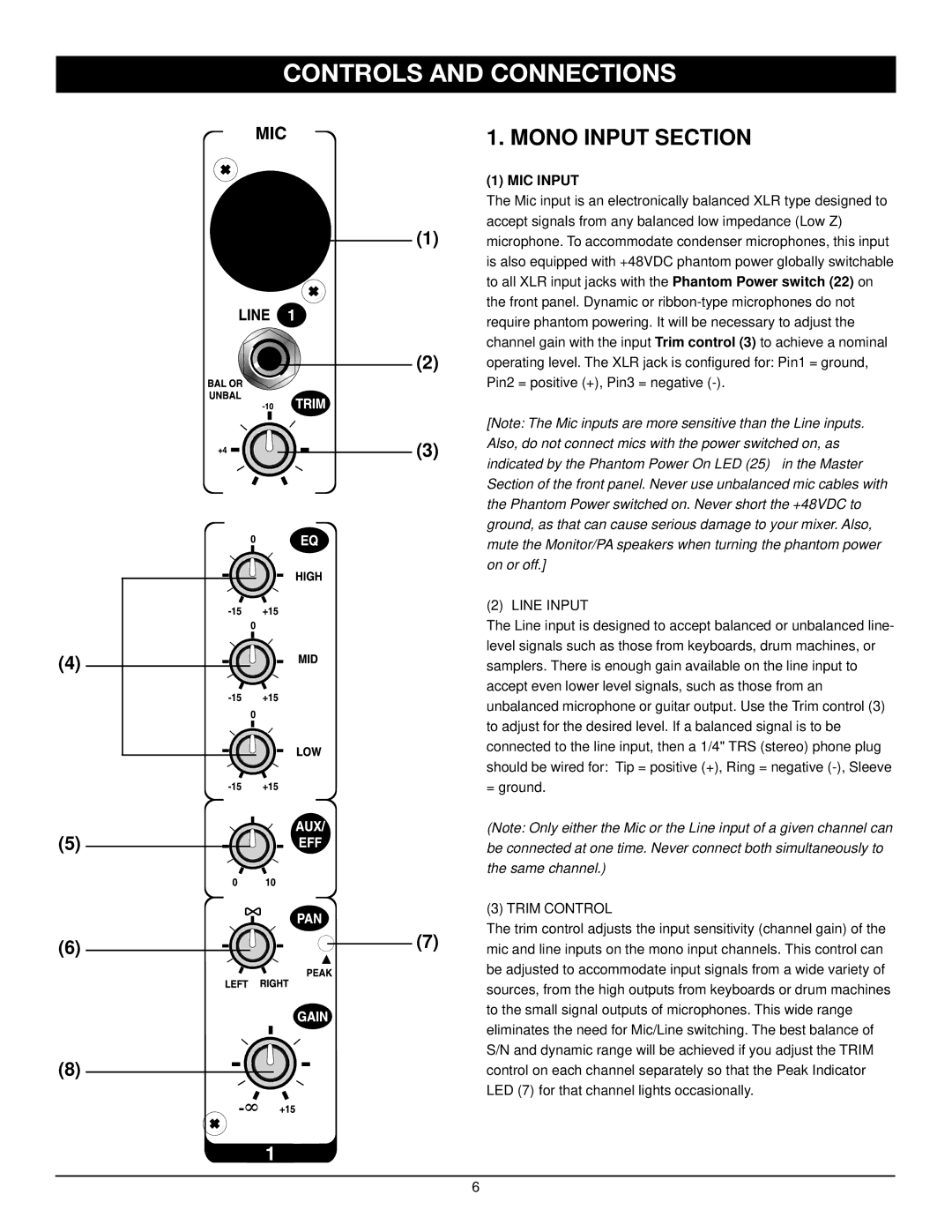MXE-612 specifications
The Nady Systems MXE-612 is a powerful and versatile audio mixer designed to meet the demands of both professional and amateur audio applications. Known for its reliability and excellent sound quality, the MXE-612 has become a popular choice for live sound reinforcement, studio recording, and multimedia presentations.One of the key features of the MXE-612 is its six input channels. Each channel provides a combination of XLR and 1/4" TRS inputs, allowing for the connection of various audio sources, including microphones, instruments, and other audio devices. This flexibility makes it easy to integrate the mixer into a wide range of setups. The preamps in the MXE-612 are designed to deliver low noise and high headroom, ensuring that audio signals are captured with clarity and precision.
Another standout characteristic of the MXE-612 is its built-in effects processor. The mixer includes multiple effects such as reverb, delay, and chorus, which can be applied to individual channels or the overall mix. This feature enhances the audio experience, allowing users to add depth and dimension to their sound. The intuitive interface of the effects processor makes it easy to dial in the desired settings quickly.
The MXE-612 also features a 3-band EQ on each channel, providing users with the ability to sculpt their sound. The EQ allows for precise adjustments of bass, midrange, and treble frequencies, offering full control over the tonal balance of each input. Additionally, the master section of the mixer includes a 9-band graphic equalizer, which further enhances the overall sound shaping capabilities.
Connectivity is another strong point of the MXE-612. It comes equipped with XLR outputs for professional audio connections, as well as auxiliary send and return capabilities for external processors or monitors. This makes the mixer suitable for a variety of applications, including live performances and studio work.
Overall, the Nady Systems MXE-612 is a reliable and feature-rich audio mixer that offers exceptional sound quality and versatility. Its combination of multiple input options, built-in effects, comprehensive EQ controls, and robust connectivity makes it an ideal choice for musicians, sound engineers, and content creators looking for a professional-grade mixer that can handle any audio task with ease. As audio technology continues to evolve, the MXE-612 stands out as a practical solution for today's audio mixing needs.

